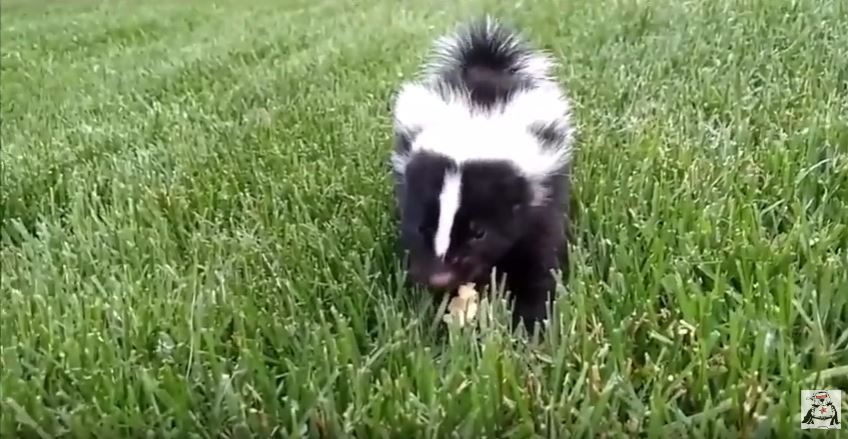About skunks: Appearance, biology, life cycle, habitat, diet, behavior

Most of us know about skunks’ ability to spray a certain liquid that bears a really strong odor, but there is much more to these animals than that. Below are some interesting facts about skunks that you may not be aware of.
Physical appearance
The different species vary greatly in their size. They are around 15-37 inches in length and they can weigh anywhere between 1 to 18 pounds. Their bodies are moderately elongated and their legs are well muscled. They have front claws that are very useful for the purpose of digging. The most common color of their fur is white and black, but there are some that are either grey or black and also others that are cream in color. All the skunks are striped in some way, and this could be one stripe across the back to the tail, some thinner stripes and white spots, or some broken stripes where the spotted skunks are concerned. Some may also have striped legs.
Diet
They are omnivorous in nature and therefore feed on animal and plant materials. They also change their diets with the seasons. They can feed on eggs, moles, birds, snakes, frogs, salamander, lizards, small rodents, earthworms, larvae and insects. They can also eat nuts, fungi, grass, leaves, roots and berries. When in urban areas, skunks can forage in garbage.
Behavior
They are solitary and crepuscular if they aren’t breeding. However, when it is cold, they can gather in dens communally so as to keep warm. They shelter in burrows during the day. They burrow using their claws. The females and males occupy home ranges that overlap. They have great senses of hearing and smell, but their vision is poor. They also spray a foul smelling liquid when they feel cornered or scared.
Life cycle
Skunks don’t live long. In the wild, they can live up to seven years, but most only live for a year. While in captivity, they may live for around for ten years.
Biology
Skunks mate during the spring and they are polygamous in nature, meaning that the males can mate with more than a single female. They usually give birth in May and the females excavate dens for the young ones, usually 4-7 kits. They are also placental and the gestation period is 66 days.
Habitat
Skunks are found in most parts of the globe and they can also thrive in suburban and urban areas.
Go back to the How to Get Rid of Skunks page or email us if you have any other questions about About skunks: Appearance, biology, life cycle, habitat, diet, behavior
About Us
We are the Pest Education Network, a non-profit organization that focuses on wildlife and pest removal education. Our approach utilizes Integrated Pest Management, a strategy advocating prevention and humane methods.


